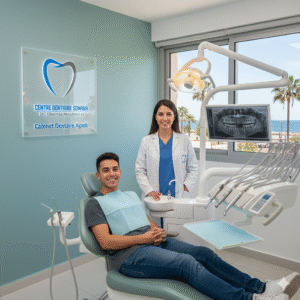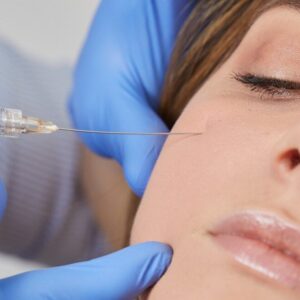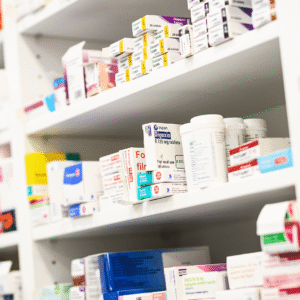Introduction
Understanding Hyperhidrosis
What is Hyperhidrosis?
Hyperhidrosis refers to sweating that exceeds what is necessary for body‑temperature regulation. This can occur in various regions including underarms, palms, feet, face or scalp. The underlying cause is often nerve‑signals triggering sweat glands excessively.
Why It Matters
Beyond mere discomfort, excessive sweating can interfere with work (such as handling tools or driving), socializing (handshake anxiety, visible sweat stains) and even skin health (constant moisture can lead to irritation). Addressing the condition thus improves both quality of life and emotional well‑being.
How Botox Works for Sweat Reduction
Mechanism of Action
Botox injections work by blocking nerve signals that stimulate the sweat glands. When these signals are interrupted, the glands reduce their output of sweat in the treated area.
Areas Suitable for Treatment
Common regions for treatment include the underarms (axillae), palms, soles of the feet, and sometimes the forehead or scalp.

Why the Procedure is “Quick and Painless”
Because the dose is small and the injection sites are shallow (near the skin surface), the procedure is generally comfortable. Topical numbing or cooling may be used to minimise any discomfort. The actual injection process often takes between 10 and 30 minutes depending on the area treated.
The Treatment Experience in Abu Dhabi
Initial Consultation
A specialist evaluates the sweating pattern (which regions, how severe, how it affects daily life) and determines whether Botox is suitable, including discussing expectations and treatment plan.
The Procedure
The skin in the area is prepared (cleaned, possibly numbed) and then multiple micro‑injections are placed in a grid pattern across the problematic zone. Because the procedure is minimally invasive, most people resume their normal activities right away.
Recovery and Aftercare
There is minimal downtime. Patients are often told to avoid strenuous activity, heavy perspiration or very hot environments for a short while immediately after treatment. Because the injection sites are small, visible impact is minimal.
How Long Results Last & What to Expect
Onset of Effect
Many patients begin to notice reduction in sweat production within a week or two of the injections.
Duration of Effect
The effect tends to last several months (commonly four to eight months or more), depending on the treated area, individual sweat gland activity and technique used. Over time, follow‑up treatments may be needed to maintain dryness and comfort.
Enhancing Longevity
While Botox addresses the nerve‑signals to the sweat glands, maintaining overall skin‑and‑gland health helps. Good skin hygiene, avoiding heavy triggers of sweating after treatment, and regular follow‑ups contribute to prolonged benefit.
Benefits of Choosing Botox for Hyperhidrosis
-
Fast procedure: often done in under 30 minutes.
-
Minimal discomfort: thanks to fine needles and numbing techniques.
-
Return to normal life quickly: little or no visible downtime.
-
Targeted treatment: only the sweat glands in the chosen region are affected, so overall body temperature‑regulation remains intact.
-
Improved confidence: less worry about visible sweat, stains, or hand‑shakes.
Is It Right for You?
Good Candidates
Those who have persistent, bothersome sweating in one or more areas, have tried conservative measures (e.g., high‑strength antiperspirants) with limited success, and are in overall good health.
What to Discuss
-
The exact region(s) of sweating (underarms, palms, feet, scalp)
-
Any medical factors that might contribute to sweating (hormonal conditions, neurological issues)
-
What amount of reduction is realistic (e.g., “less sweat” vs. “no sweat at all”)
-
Frequency of follow‑up treatments to keep results.
Why Abu Dhabi is an Excellent Location for This Treatment
-
Availability of advanced, minimally invasive aesthetic procedures tailored for hot‑climate, high‑sweat‑risk individuals.
-
Access to providers experienced in managing hyperhidrosis as well as aesthetic‑related injections.
-
Focus on comfort, efficiency and quick‑return‑to‑normal routines, making it suitable for busy professionals or individuals with active lifestyles.
-
Strong regulation and quality standards ensure that the technique and equipment used meet high standards.
Practical Considerations
-
Schedule treatment at a time when you can avoid heavy sweating for the first 24–48 hours (e.g., light activities).
-
Wear loose, breathable clothing on the day of and immediately after the procedure.
-
Avoid heavy exercise or saunas immediately post‑treatment to allow the injected area to settle.
-
Plan for periodic follow‑up sessions: while results last months, the effect diminishes gradually.
-
Monitor the treated area: while serious complications are rare, any unexpected change should be discussed with your specialist.
FAQs — Frequently Asked Questions
Is the procedure painful?
Most people report only minimal discomfort during injections. Some numbing or cooling is often used to increase comfort.
How soon will I see results?
Some reduction in sweat can be noticed within a week, with full benefit typically around two weeks post‑treatment.
How long will the effect last?
While it varies, many individuals experience dryness or significantly reduced sweating for four to eight months or more, after which a repeat treatment may be offered.
Can all sweaty areas be treated with Botox?
Yes, many regions such as underarms, palms, feet, forehead/scalp can be treated. The suitability and expected result depend on site, severity and anatomy.
What happens after the effect wears off?
When the effect diminishes, sweating may gradually increase again. Many people opt for follow‑up treatments to maintain comfort and dryness.
Are there major risks or long‑downtime?
The treatment is minimally invasive and typically has minimal recovery time. Most individuals return to normal activities shortly after.
Conclusion
For individuals living in Abu Dhabi who experience troublesome excessive sweating, quick and painless Botox treatments provide an effective and convenient solution. The key advantages include a fast procedure, minimal downtime, targeted and controlled treatment of problem areas, and the possibility of returning to daily routines almost immediately. With realistic expectations and occasional maintenance sessions, many people find significant relief, enhanced comfort and a boost in confidence.





